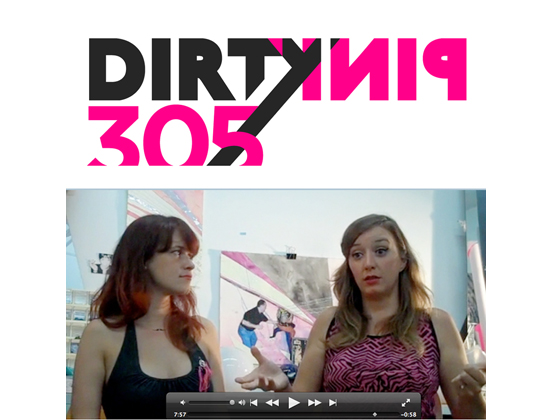Most cities have their “art stars.” Instead, Miami has an art fair, a handful of renowned institutions, and some really impressive private collections. This is not due to a lack of creative and boundary-pushing artists and artist spaces—a local “underground,” or what I like to call “real;” Miami’s art scene is very present and also, refreshingly , a little “wild west” in feel.
This “real art world” just happens to be out of the mainstream dialogue that characterizes Miami and is, as a result, under-recognized and placed as secondary to the institutions whose “bark” is louder.
I have lived and worked in Miami for over eight years, and–at the risk of sounding sentimental–artists living and working in Miami are used to the exposure that comes with having the art world at their doorstep, and yet despite this, they have chosen to maintain an ethic of community (or rather, of communities plural, echoing Miami’s true diversity). These artist communities remain largely undiscovered, and as a result, the artists’ voices have remained unheard, undocumented, and in many respects excluded from a larger global art dialogue. There are of course individual exceptions: artists such as Robert Chambers, Bob Thiele, Mark Handforth and Dara Friedman have managed to create careers outside of Miami, and are well-known outside of their home base. There are also artists like Bert Rodriguez and Adler Guerrier who have been featured in the Whitney Biennal—but has this helped them to capitalize on further opportunities and establish their careers elsewhere? Bert Rodriguez, in an interview with Dirty Pink 305, shared his experience of the Miami art landscape:
[youtube:https://www.youtube.com/watch?v=Zh1XJ0fcQpo]
Over the past decade, the commercial forces in the field have encouraged a fervor among collectors to seek out the “new.” Over time, this has created a lot of frustration amongst artists—an older generation of artists felt excluded, and a younger generation recognized their moment of recognition to be fleeting. This cultivated an attitude that emphasized “the now” along with the compulsion to consistently push forward without taking stock of what had come before. To make matters worse, aside from a few individual initiatives, nobody seemed to be documenting what was happening. In my next blog post, I will introduce these initiatives and the partners in our project.
To capture a moment that felt like it could slip away undocumented, I started Dirty Pink 305. This has begun as a website (www.dirtypink305.com) to collate artist interviews and provide a resource for artist opinion. The interviews are straightforward and roughly edited, and each interview has been transcribed to create links to every person, place and thing an artist talks about in order to establish who has really impacted the artist community. So far through these interviews, I have learned of many events and exhibitions that I had no idea about, even though I was living and working in Miami’s art community. I have also seen how multi-faceted that art community is, and how Art Basel Miami has acted as a singular unifying force on Miami’s art scene–and not always to a positive end. Magnus Sigurdarson elaborated on this point in his interview with us:
[youtube:https://www.youtube.com/watch?v=u_O8isz4JX0]
Dirty Pink 305 aims to do two things: document artist opinion in order to re-create history in the context of those artists’ experiences, and expand the public’s understanding of the local art scene beyond the peripheral and superficial.
Next step… a publication that collates, statistically analyzes and contextualizes the interview material we’ve collected in order to redevelop a narrative and statistical overview based on artist opinion alone. I, along with my blogging partner Tina Acevedo, will be explaining what this means in more detail in our upcoming posts.
Post written by Claire Breukel of Dirty Pink 305.




